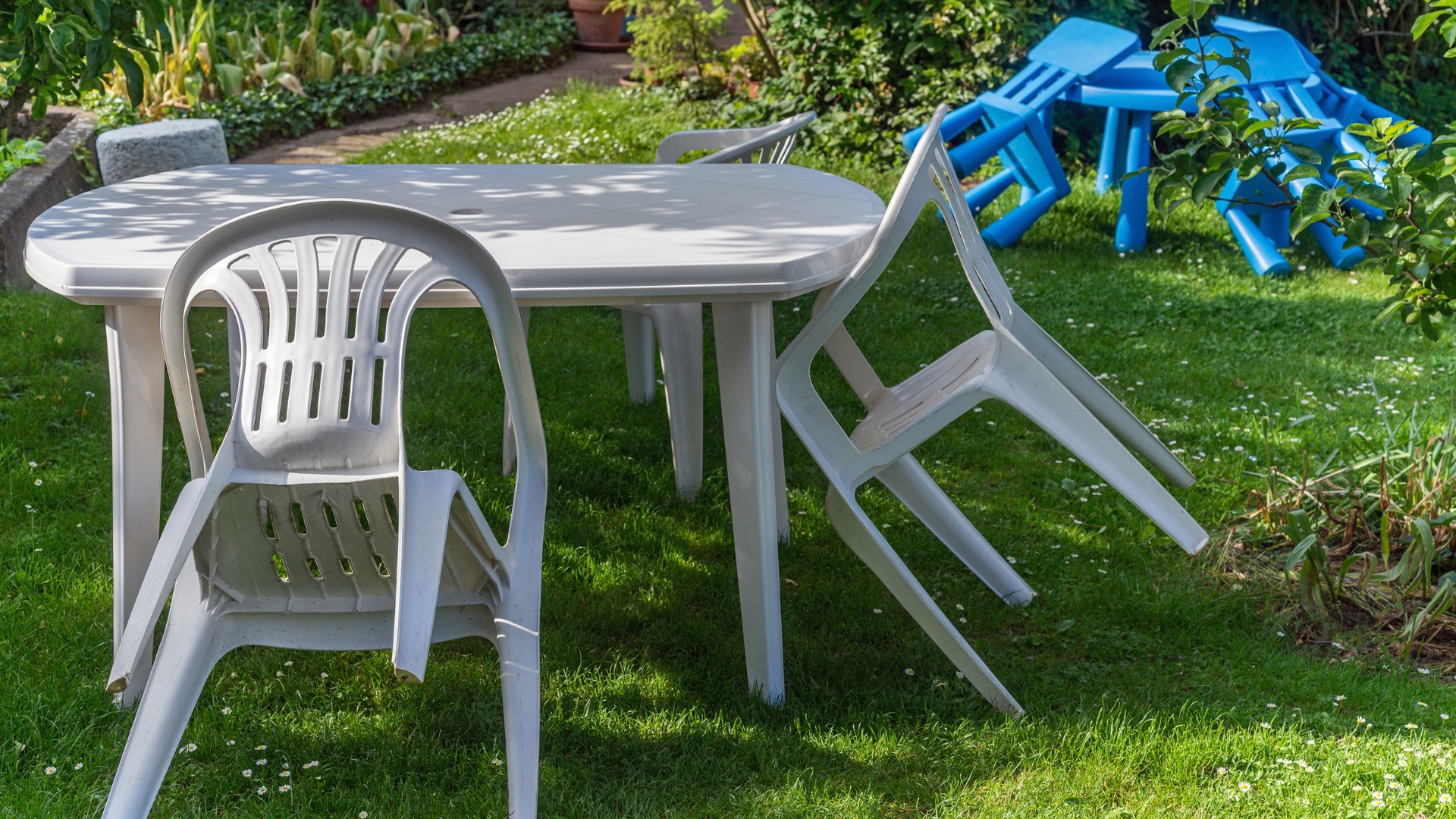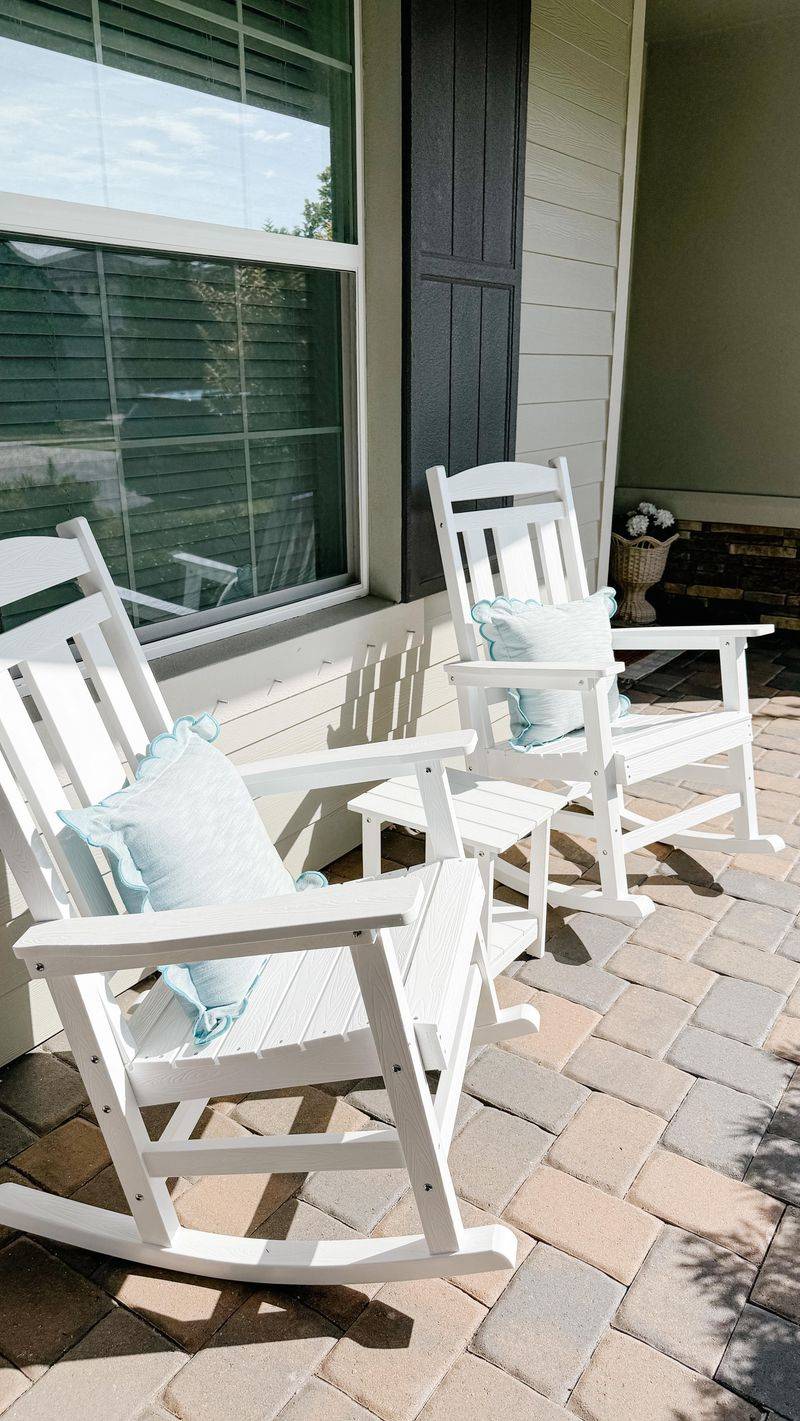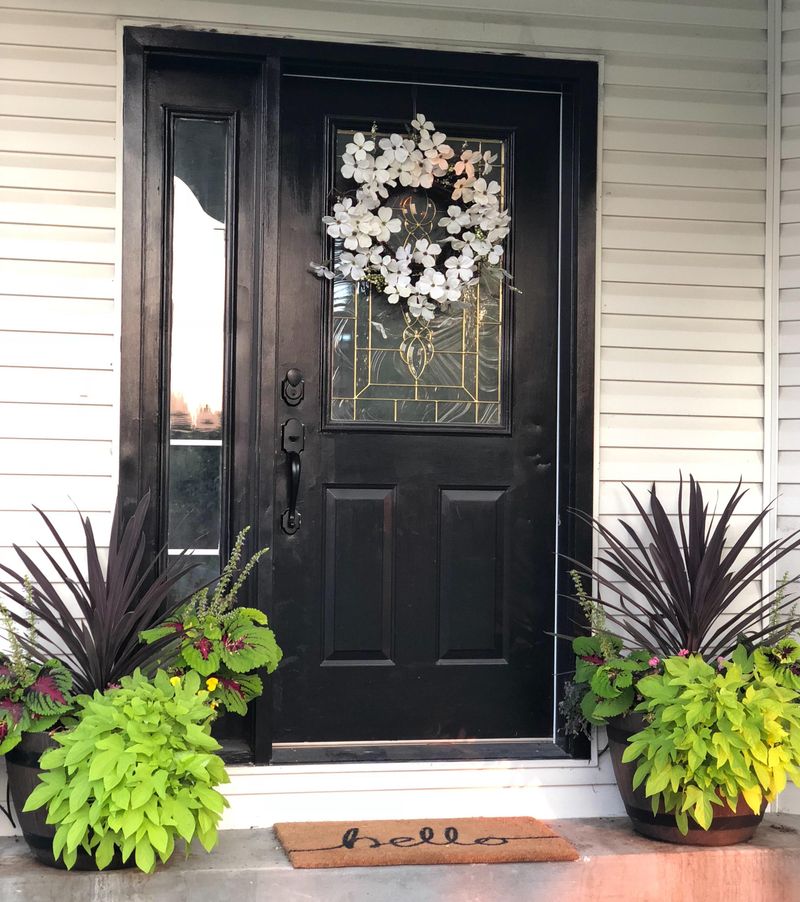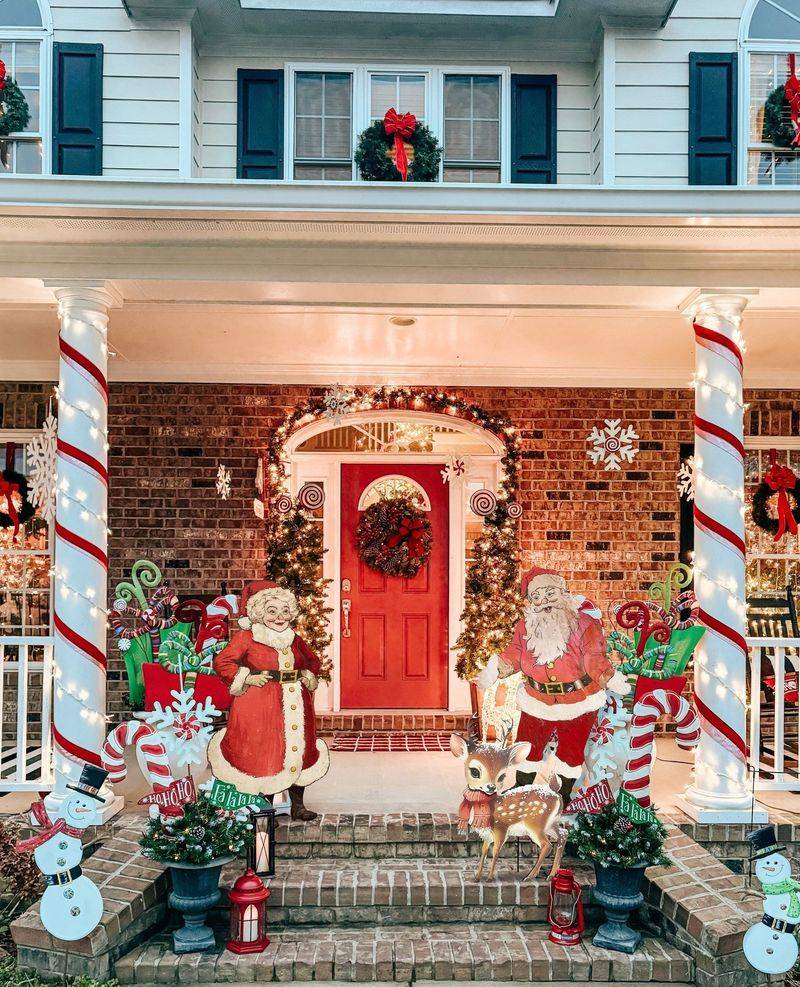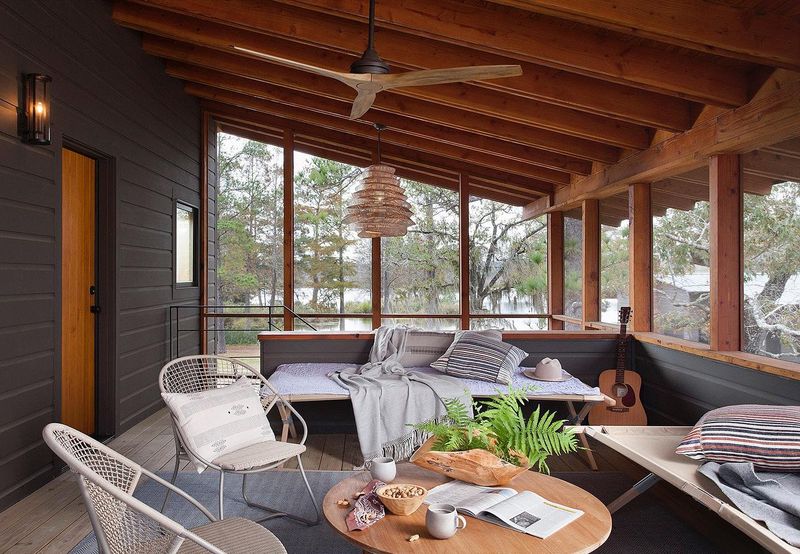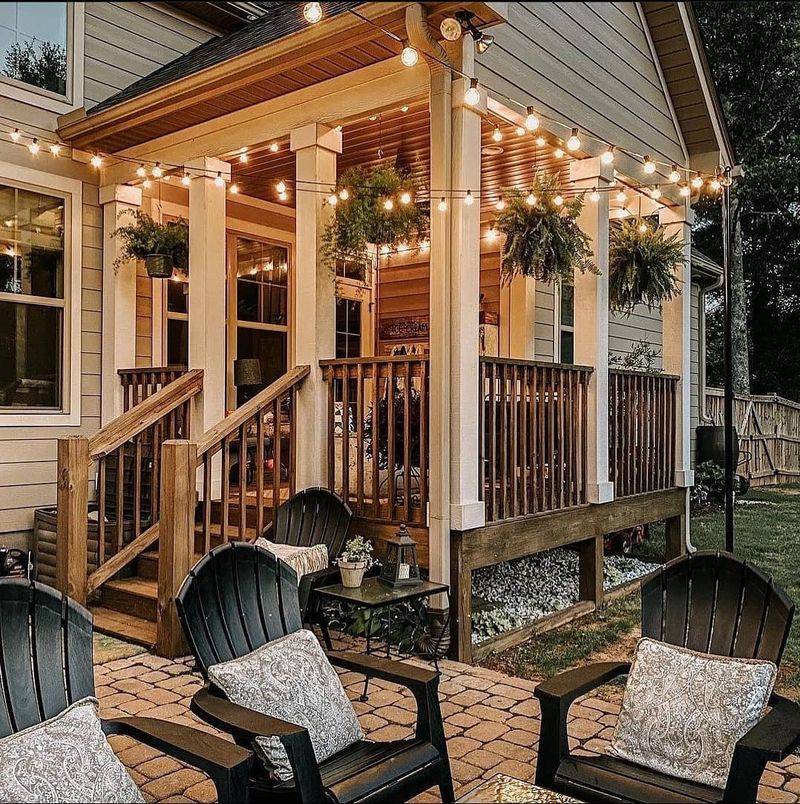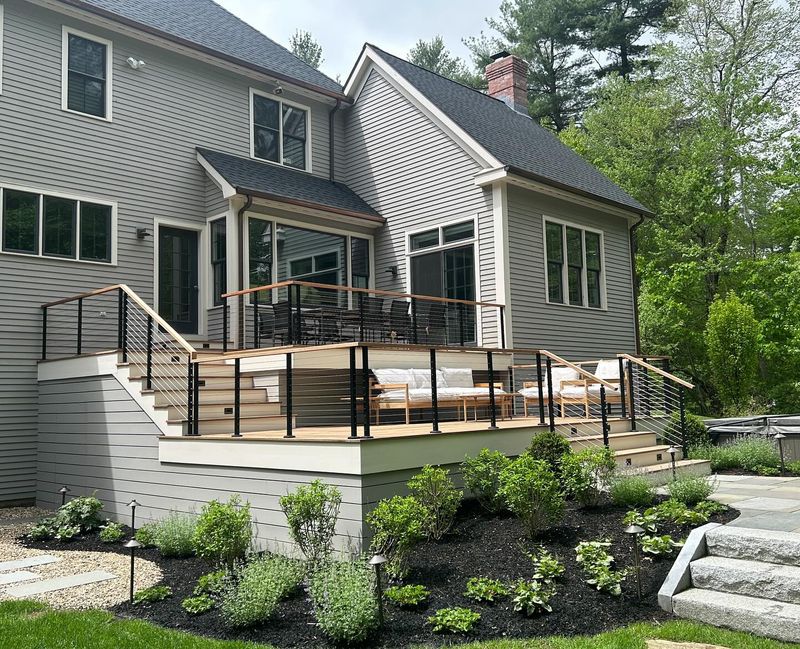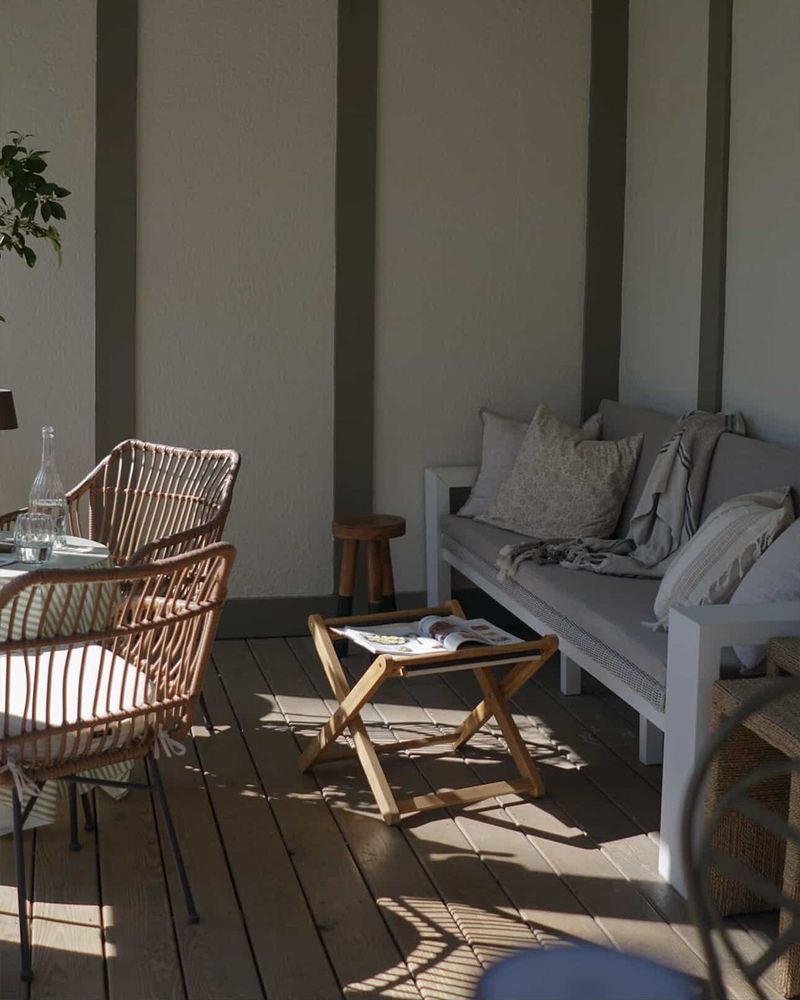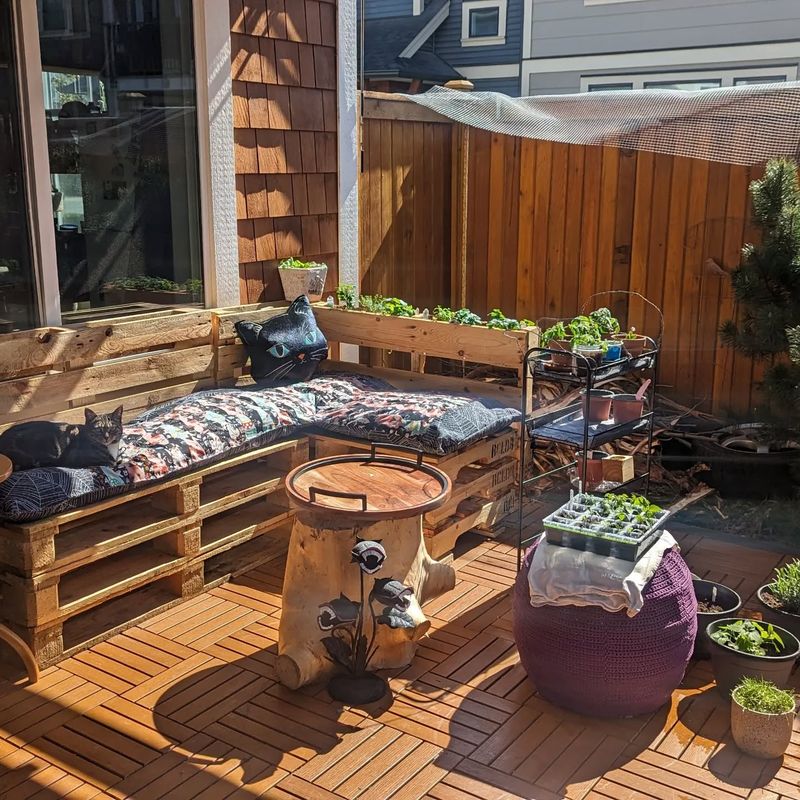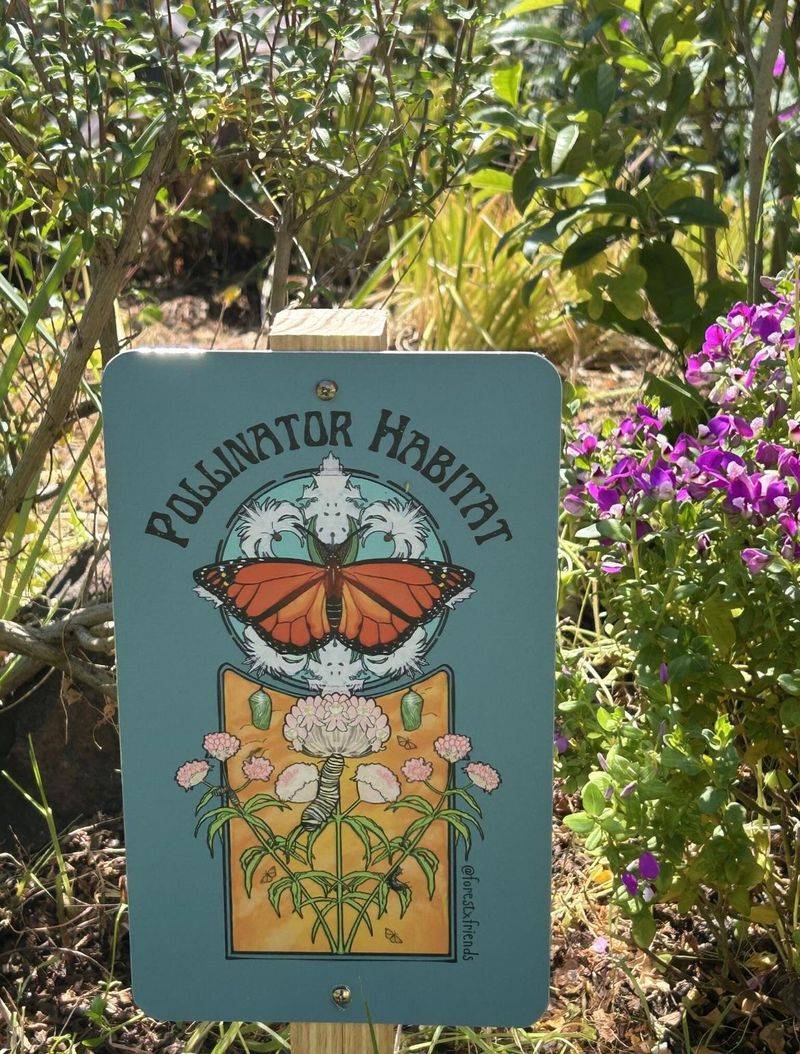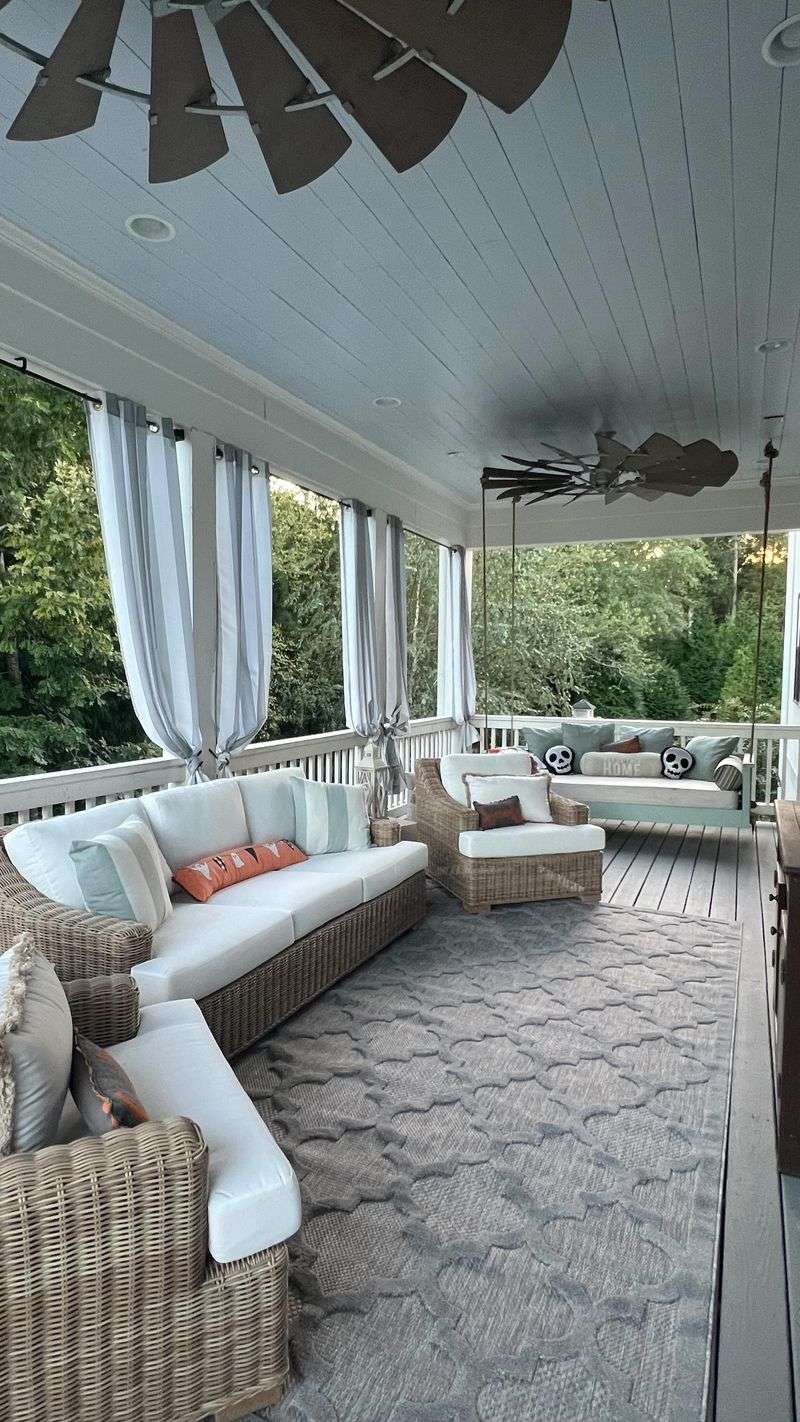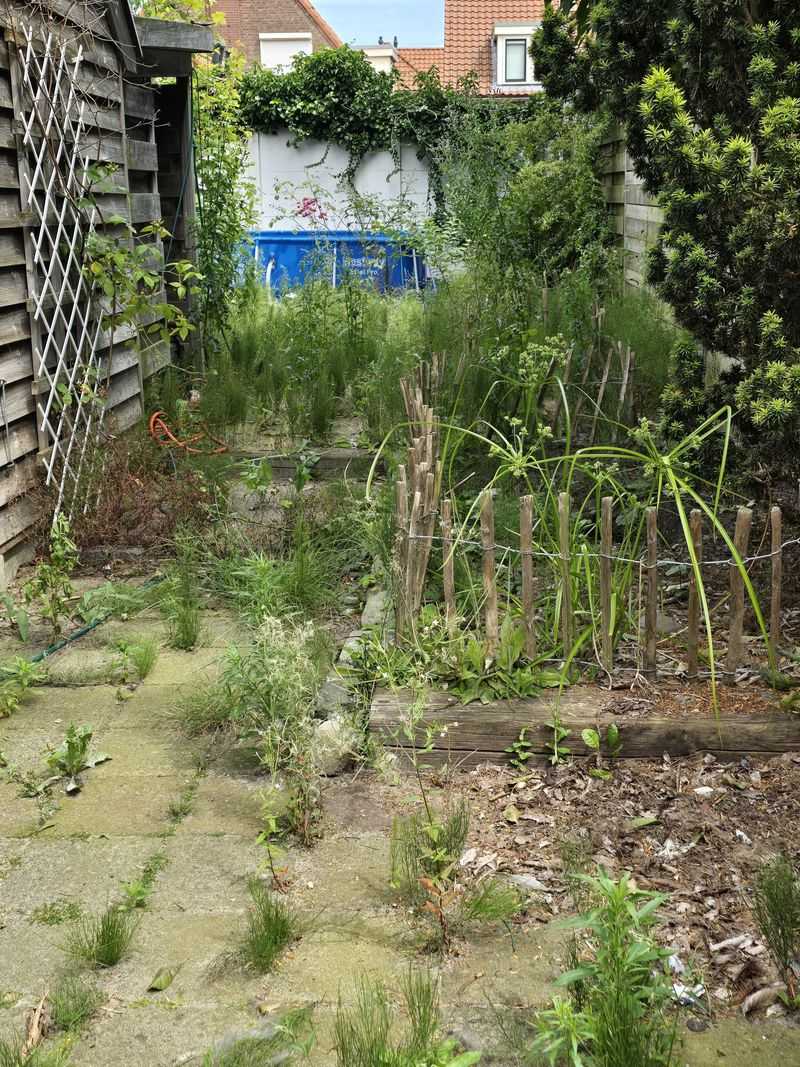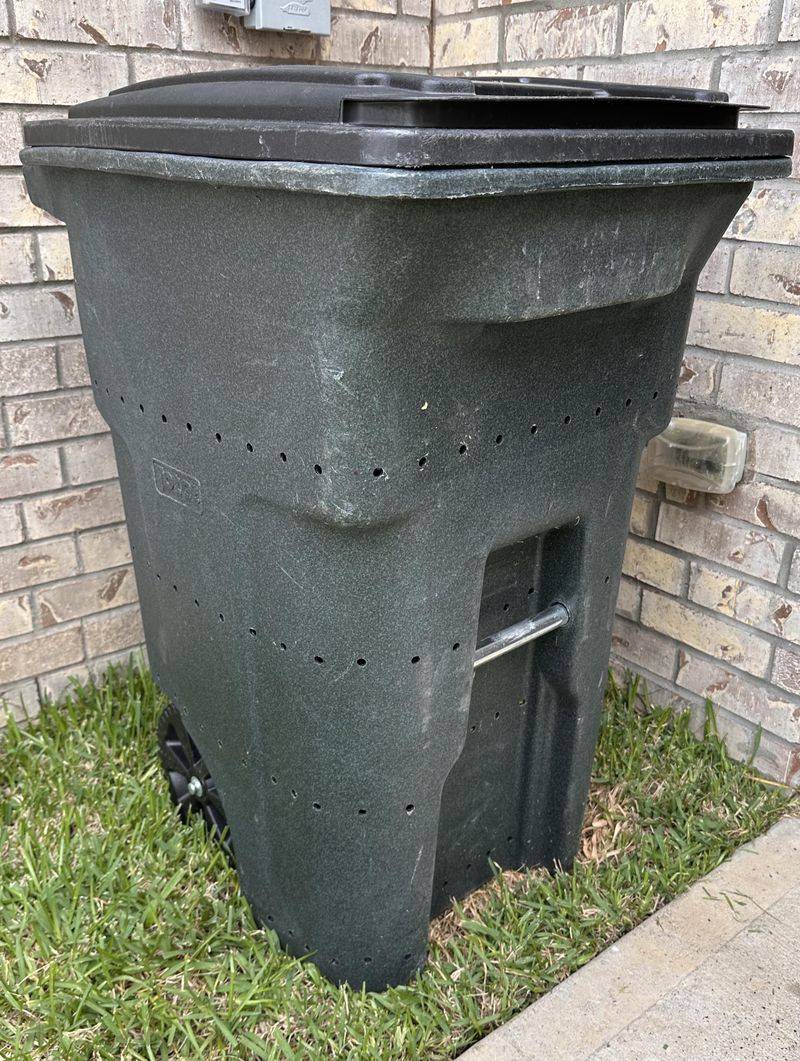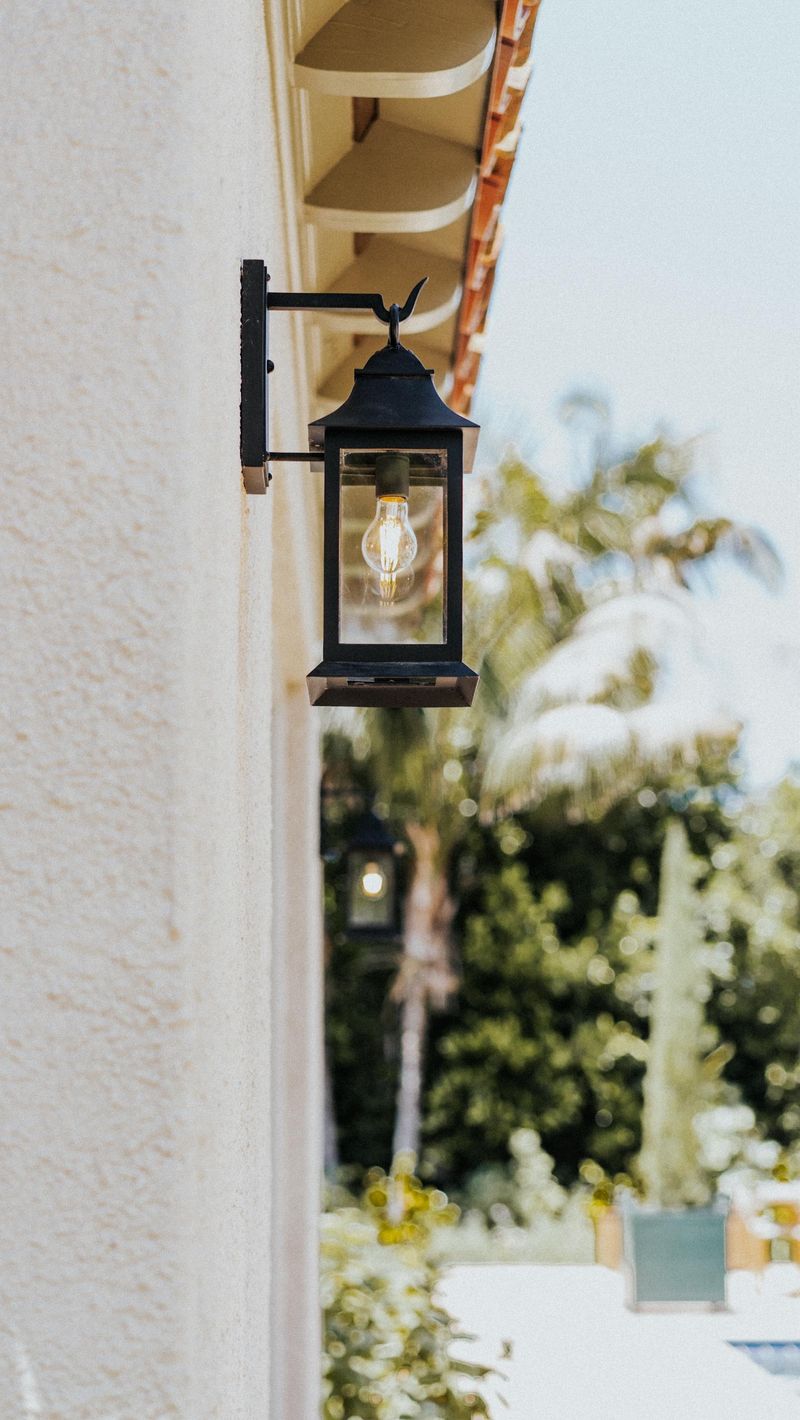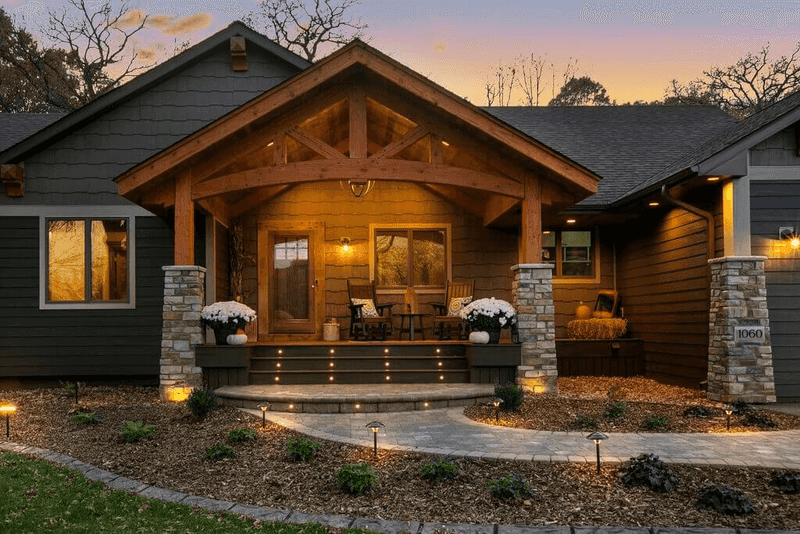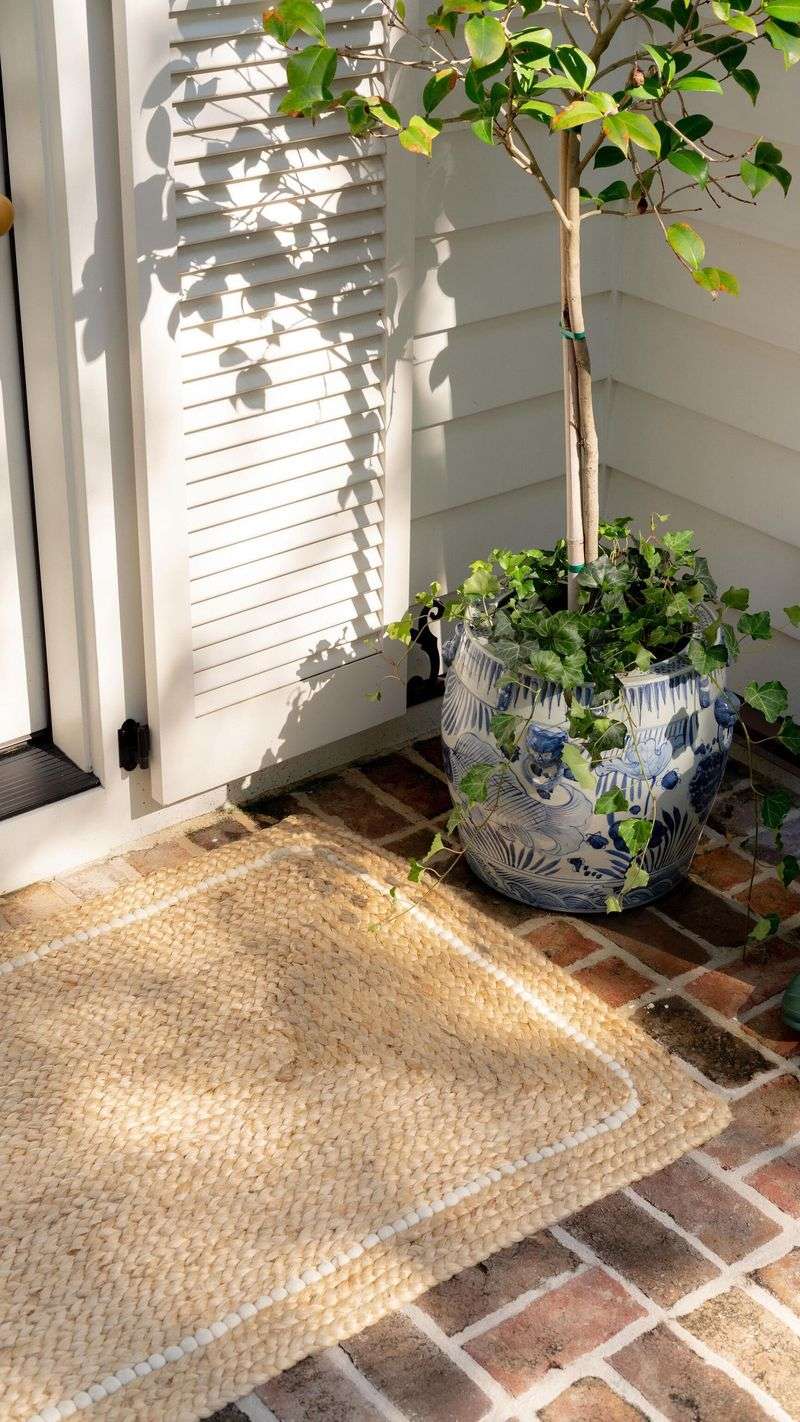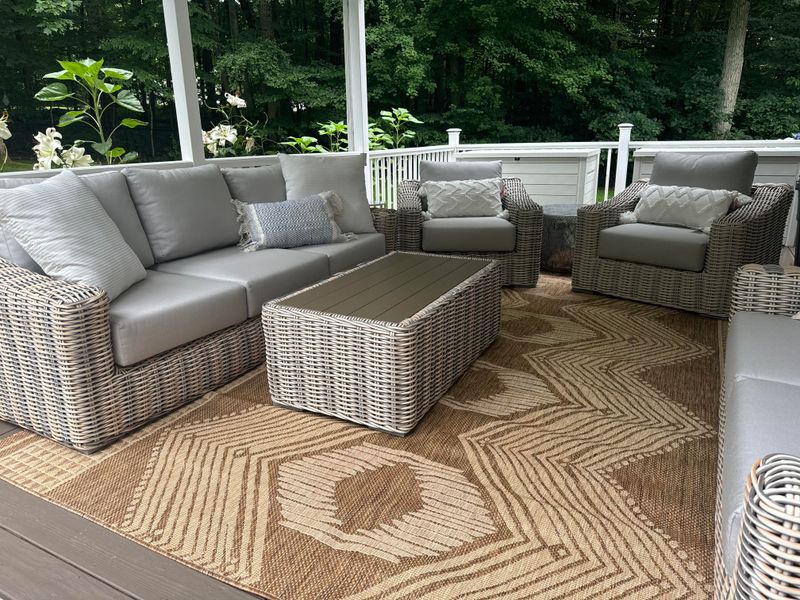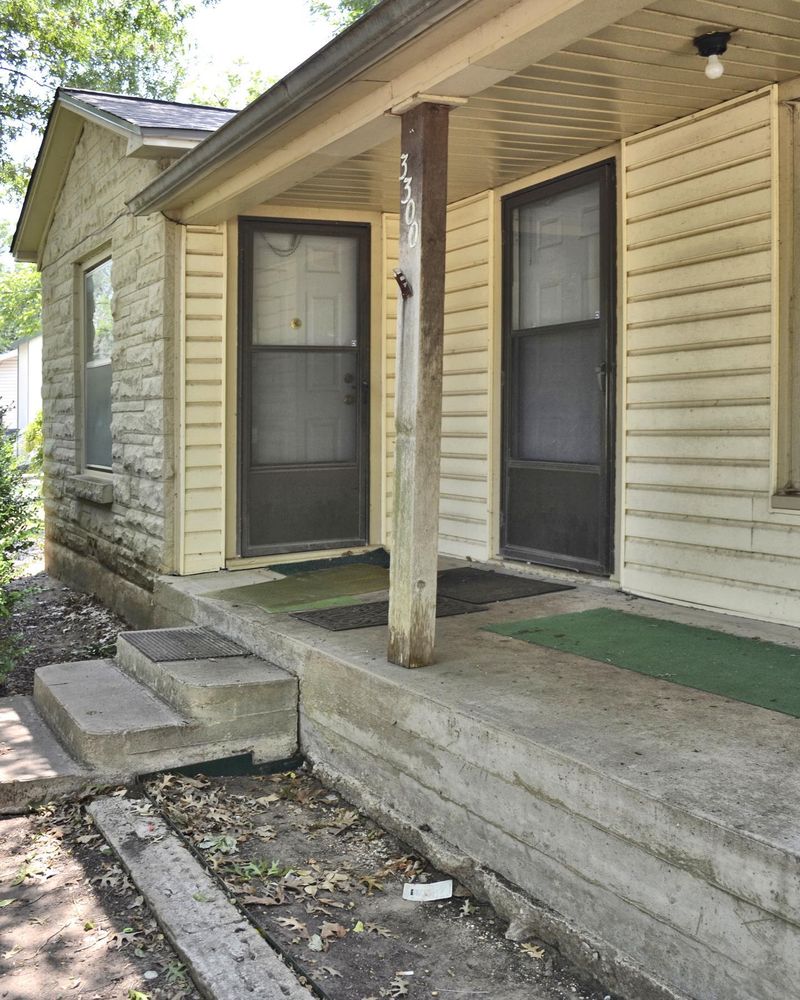Some things just don’t belong on a porch—and trust me, designers have strong opinions about it. If you’ve ever felt like something’s a little off out there but couldn’t put your finger on it, this might be why.
From furniture that fizzles in the sun to decorations that quietly scream “help,” this list spills the tea. Your porch deserves to be a cozy little retreat, not a cluttered catch-all.
Let’s clean things up and give it the charm it was born to have.
1. Plastic Furniture
Those inexpensive white plastic chairs might seem practical, but they scream ‘temporary’ and ‘cheap’ to anyone walking by. The material fades quickly in sunlight, turning an unappealing yellow within months.
Quality outdoor furniture made from teak, metal, or even higher-grade polywood costs more initially but lasts for years. The investment pays off in both appearance and durability, making your porch look intentionally designed rather than hastily assembled.
2. Artificial Plants
Fake greenery collects dust, fades in sunlight, and lacks the natural movement real plants provide. From just a few feet away, even expensive artificial options look noticeably fake, creating an uninviting atmosphere.
Real plants bring life, texture, and seasonal change to your porch. Low-maintenance options like pothos, snake plants, or seasonal ferns require minimal care while adding authentic beauty. The subtle rustling of leaves in the breeze creates ambiance no fake plant can replicate.
3. Cluttered Holiday Decorations
Leaving Christmas lights up until March or Halloween decorations until Thanksgiving makes your home look neglected. Seasonal décor that overstays its welcome creates visual chaos and shows a lack of attention to detail.
Rotating decorations seasonally keeps your porch looking fresh and intentional. Store holiday items properly after their season ends, and consider subtle seasonal touches rather than overwhelming displays. Your neighbors will appreciate your timely transitions between holidays.
4. Indoor Furniture
Regular sofas, coffee tables, and other interior pieces quickly deteriorate when exposed to outdoor elements. Fabric becomes moldy, wood warps, and metal rusts – creating not just an eyesore but potential health hazards.
Furniture specifically designed for outdoor use features weather-resistant materials and proper drainage. These pieces maintain their appearance despite rain, humidity, and temperature fluctuations. The right outdoor furniture combines comfort with durability for years of enjoyment.
5. Mismatched Lighting
Random assortment of different light fixtures creates visual confusion rather than the welcoming glow you want. String lights paired with formal sconces and solar stake lights lack cohesion and purpose.
Consistent lighting creates ambiance while enhancing safety. Choose fixtures in complementary styles, consistent finishes, and appropriate brightness levels. Good lighting design considers both function and aesthetics, illuminating pathways while highlighting architectural features.
6. Overstuffed Storage
Using your porch as a catchall for bikes, sports equipment, and seasonal items creates a cluttered, unwelcoming entrance. This makeshift storage solution broadcasts disorganization to everyone who visits or passes by.
Keep only essential, porch-appropriate items visible. Incorporate stylish storage solutions like decorative boxes, benches with hidden compartments, or attractive bins. Your porch should feel like an intentional living space, not an extension of your garage.
7. Faded Cushions
Sun-bleached, stained cushions with visible wear make even expensive furniture look neglected. Faded fabrics signal that the entire porch has been overlooked, diminishing your home’s curb appeal dramatically.
Weather-resistant fabrics specifically designed for outdoor use maintain their color and integrity. Replace cushions showing significant wear, or use cushion covers that can be easily removed and washed. Fresh, vibrant cushions instantly revitalize your entire porch atmosphere.
8. DIY Pallet Furniture
Roughly finished pallet projects often look unpolished and temporary. Splinters, uneven surfaces, and chemical treatments in shipping pallets can actually create safety hazards for your family and guests.
If you love the rustic look, invest in properly finished outdoor furniture made from new lumber. Professional-grade porch pieces offer the warmth of wood with proper construction techniques. Quality craftsmanship ensures both safety and visual appeal.
9. Excessive Signage
Decorative signs with phrases like “Welcome” or “Home Sweet Home” lose their charm when overused. Multiple text-heavy decorations compete for attention and create visual noise rather than meaningful accents.
Limit yourself to one statement piece if you love decorative signs. Let architectural elements and quality furnishings speak for themselves without explanatory text. Your porch tells your home’s story through thoughtful design, not literal signage.
10. Uncoordinated Throw Pillows
Random assortment of pillows in clashing patterns and unrelated colors creates visual chaos. Mismatched pillow sizes and shapes disrupt the balanced look designers strive to achieve in outdoor spaces.
Choose pillows that complement your overall color scheme while adding interesting texture. Limit your palette to 2-3 coordinating colors and vary textures rather than patterns. Thoughtfully selected pillows add comfort and style without overwhelming the space.
11. Neglected Plants
Dead or dying plants send a stronger negative message than having no plants at all. Brown leaves, empty soil, and forgotten hanging baskets suggest neglect that extends beyond just gardening habits.
Choose low-maintenance varieties suited to your climate and light conditions. Set up simple watering systems or reminders to keep greenery thriving. Healthy plants create a vibrant, welcoming atmosphere that shows attention to detail and care.
12. Exposed Trash Cans
Visible garbage bins create immediate negative impressions, no matter how lovely the rest of your porch might be. The visual (and sometimes olfactory) intrusion of waste containers undermines all other design efforts.
Position bins around the side of your home or create attractive enclosures that hide them from view. Decorative screens, lattice surrounds, or purpose-built cabinets keep necessary items accessible but invisible. This simple change dramatically improves your home’s curb appeal.
13. Outdated Light Fixtures
Rusted, bug-filled light fixtures from decades past date your home instantly. Yellowed plastic covers and fixtures in outdated finishes make your entire porch look neglected and stuck in time.
Modern outdoor lighting combines improved technology with timeless design. LED options use less energy while providing better illumination. Updated fixtures in classic styles offer lasting appeal without looking trendy or temporary.
14. Excessive Themes
Heavy-handed decorating themes like “beach cottage” or “rustic farmhouse” can quickly feel tacky when overplayed. Anchors, rope, and seashells everywhere or excessive rustic signage creates a space that feels more like a theme park than a home.
Subtle thematic elements incorporated sparingly create interest without overwhelming. Let architectural details and quality materials take center stage instead of themed accessories. Thoughtful restraint creates sophisticated spaces that welcome without explaining themselves.
15. Worn-Out Welcome Mats
Faded, frayed mats with barely visible designs or text make a poor first impression. The humble doormat is surprisingly important – it’s literally where guests pause before entering your home.
Replace worn mats seasonally or whenever they begin showing wear. Choose designs that complement your home’s style rather than novelty options with jokes or sayings. A quality mat in good condition shows attention to detail that guests notice.
16. Undersized Rugs
Tiny area rugs that float disconnected from furniture make your porch feel disjointed and poorly planned. A postage-stamp sized rug under a conversation area creates an awkward, unanchored feeling.
Properly scaled outdoor rugs should be large enough for furniture legs to rest on them. This creates a defined zone that feels intentional and cohesive. Weather-resistant materials ensure your investment maintains its appearance through changing seasons.
17. Unfinished Projects
Half-painted railings, partially installed lighting, or other incomplete improvements create an impression of disorganization. Visitors notice these unfinished details more than you might realize.
Complete one project before beginning another to maintain a polished appearance. If time constraints exist, focus on smaller, completable tasks rather than major overhauls. Finished simple designs always look better than partially executed ambitious ones.

